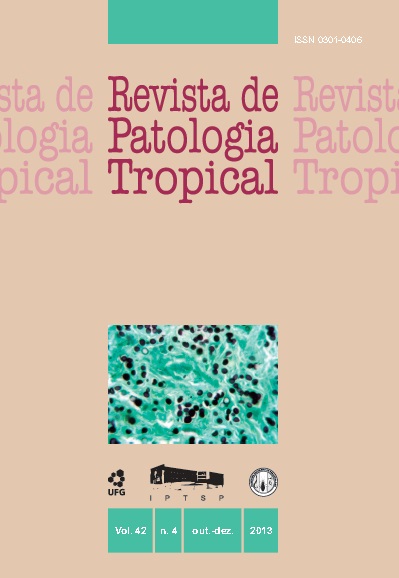Frequency of parasite structures in squares and public parks of Porto Alegre city, Brazil
DOI:
https://doi.org/10.5216/rpt.v42i4.27924Keywords:
Soil, playgrounds, public parks, parasites, zoonosisAbstract
Soil is a major reservoir of parasite structures and is an important vehicle for the spread of parasites in the population because some helminths and protozoa spend a stage of their life cycle there. From July 2001 to June 2004 3,120 soil samples were collected in 18 areas of Porto Alegre, RS. The samples were processed by the flotation method and 40.8% had parasite structures, while 100% of the public squares were contaminated. The structures were: Ascaris spp. (10.2%), eggs of Trichuris spp. (4.4%), Toxocara spp. (4.2%), eggs of the Strongyloidea superfamily (3.4%), protozoan oocysts (16.0%) and larvae of helminths (18.0%). Based on these data, there is a need to implement controlmeasures that reduce the risk of contamination of public places.
Downloads
Downloads
How to Cite
Issue
Section
License
The manuscript submission must be accompanied by a letter signed by all authors stating the full name and email address, confirming that the material has not been published or is under consideration for publication elsewhere, and agreeing to transfer copyright in all media and formats for Journal of Tropical Pathology. The authors will not be paid for published articles. They are solely responsible for the content of those articles, even if the Editor holds the right to adjust them to the norms of the journal.
The reviewers will not be paid for the peer review process.

